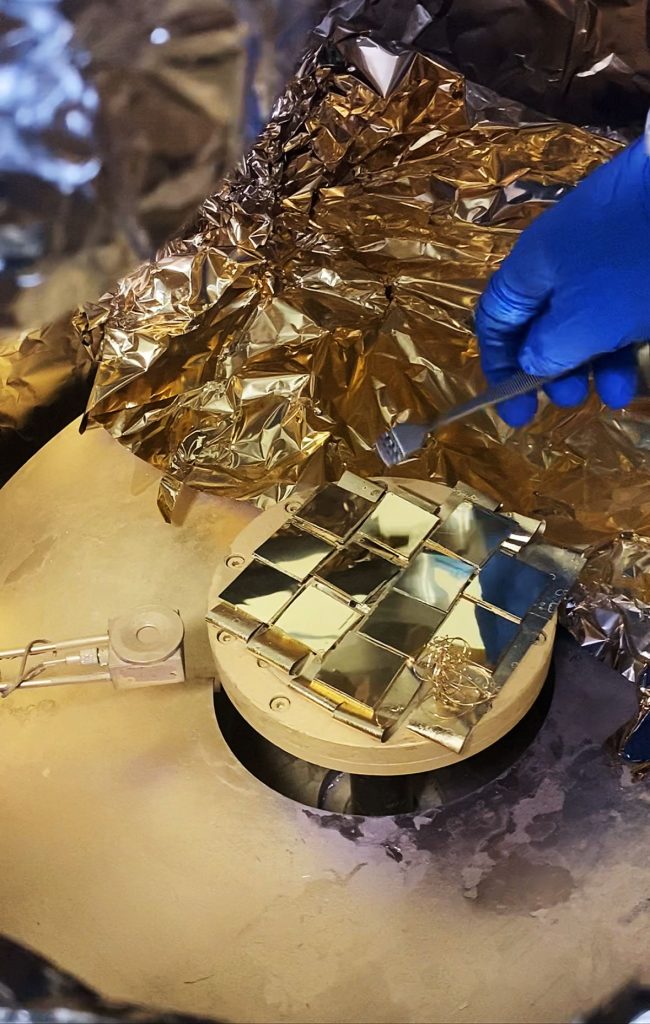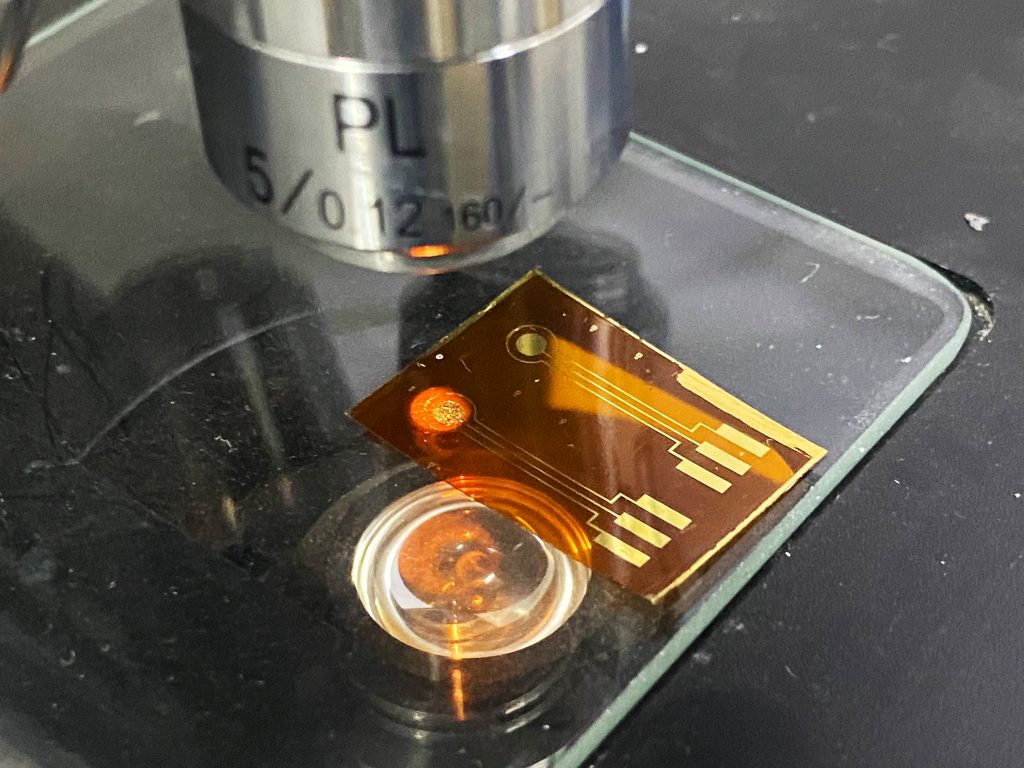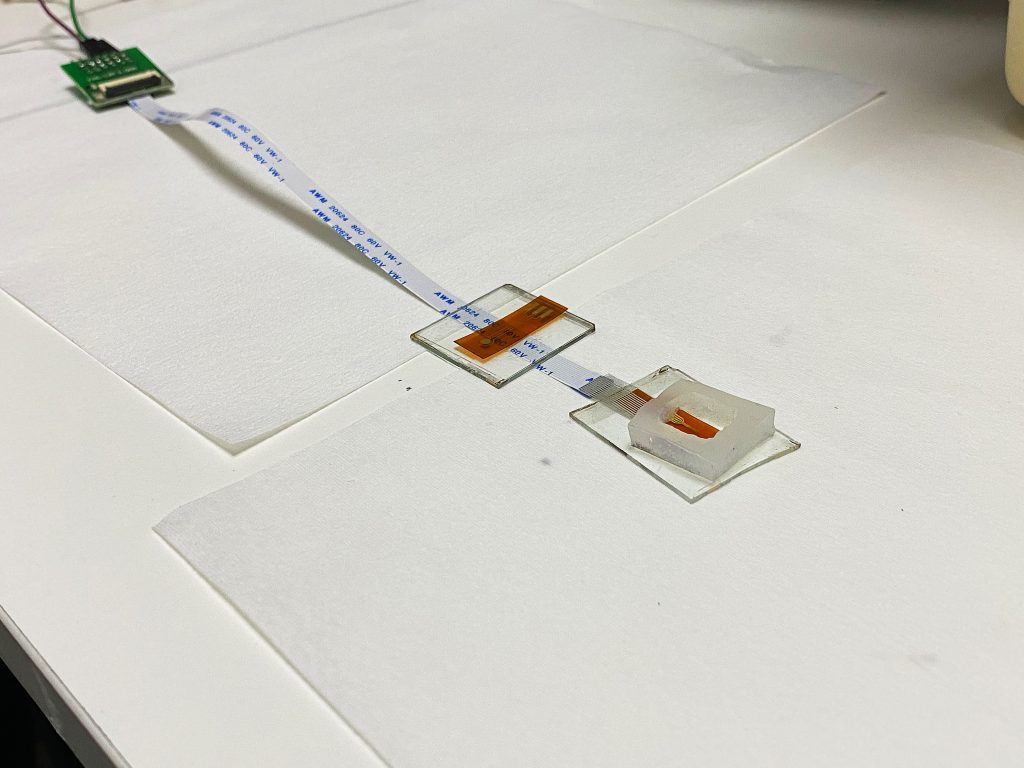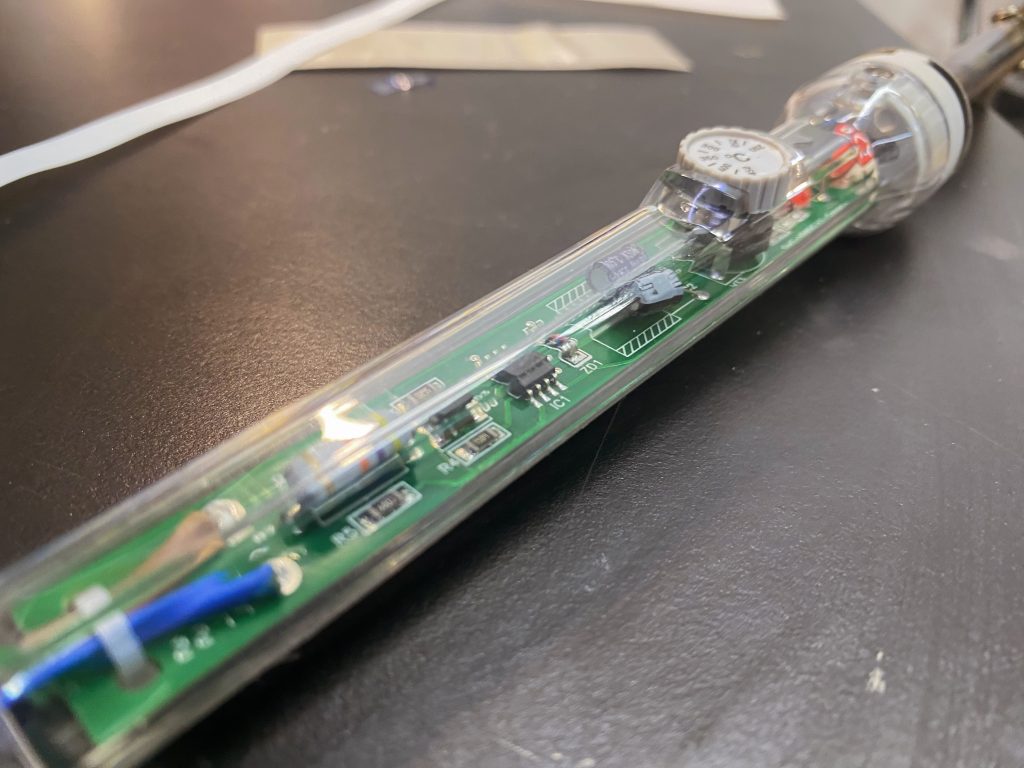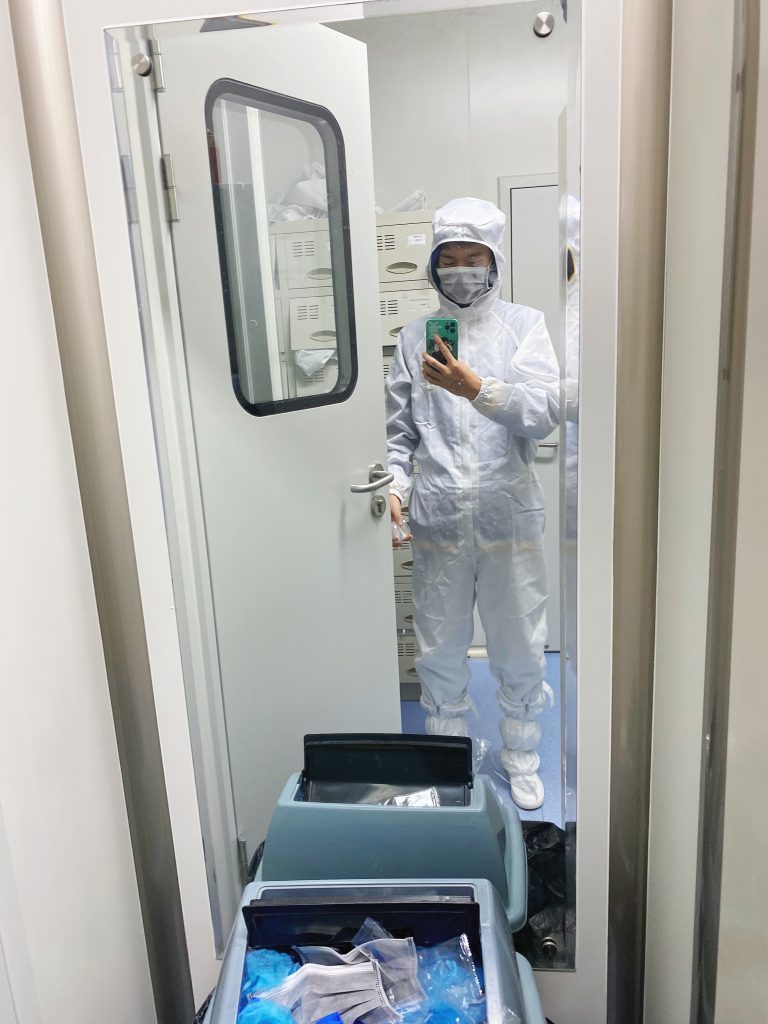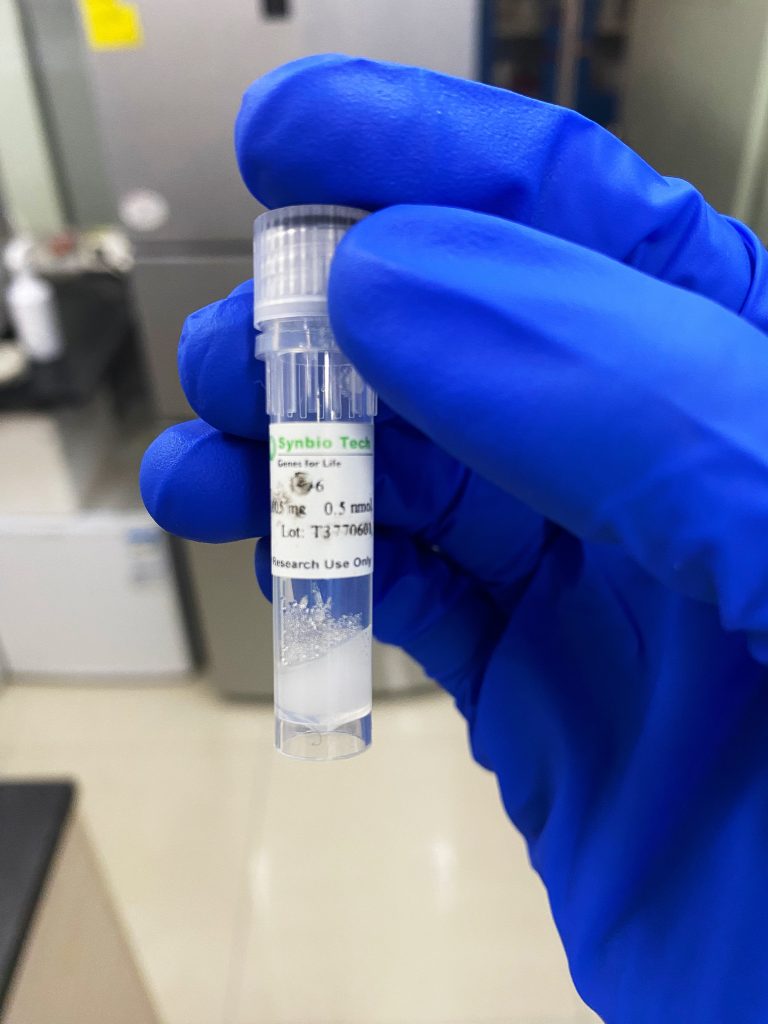During my 11th-grade break, I had an enriching internship at Tsinghua University’s Quantum Dot Spectrometry And Sensing Device Laboratory. I worked as a research assistant under Prof. Lan Yin. I was involved in designing an implantable biosensor to detect cytokine storm and inflammation markers. I also got the opportunity to utilize the Magnetron Sputtering machine for gold and chromium sputtering.
Research Abstract:
Continuous monitoring of proteins in living organisms is crucial for real-time disease management and prevention. While implantable sensors for tracking small molecules like glucose have been available for over a decade, protein analysis remains a significant challenge. This is due to the low physiological levels of proteins, which require sensors with high affinities. These high affinities result in prolonged binding durations (t1/2 ~20 hours) and slow response times when protein concentrations decrease.
To address this, we introduce active-reset sensors that use high-frequencyoscillations to accelerate protein dissociation, enabling t he sensor to return to its unbound state in under one minute. When integrated into implantable devices, these sensors facilitate real-time, in vivo protein monitoring in interstitial fluid. The active-reset technology allows biomarker levels to be tracked on a physiological timescale, providing critical insights for inflammation monitoring in living organisms.
